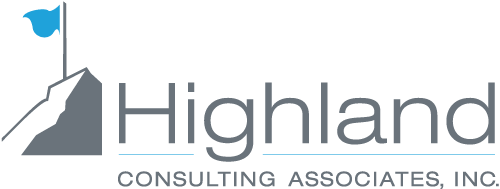ESG Investment Rules for ERISA Plans
While the Department of Labor rules keep changing, plan sponsors and fiduciaries should be familiar with this investment approach and what these rule changes could mean for retirement plans.

As investor interest in sustainable investments has been increasing over the last decade, the trend has attracted heightened interest and action from regulatory and legislative bodies as well. In recent years, the ESG investing guidance from these bodies has shifted with changes in political administrations, raising questions about whether ESG components of retirement plan portfolios reflect the prudent discharge of a plan sponsor’s fiduciary duties. Are these components of an investment lineup defensible?
Let’s recap the recent developments that could impact employers seeking to include ESG assets in retirement plan portfolios.
The Trump-era DOL rule steers ERISA plan investors away from ESG assets.
In November 2020 as the Trump administration was in its final weeks, the Department of Labor (DOL) adopted amendments to the “investment duties” under the ERISA. The so-called ESG rule, or Financial Factors in Selecting Plan Investments, required plan fiduciaries to select investments and investment courses of action based solely on financial considerations.
“Pecuniary” or economic factors were to be the only relevant factors for plan sponsors in creating investment lineups, including Qualified Default Investment Assets (QDIA) which, it stated, could not be offered if the option included consideration of non-pecuniary factors. An earlier version of the rule, widely criticized, was stricter, and expressly limited the investment in ESG funds.
But not so fast.
This ESG rule was to become effective January 12, 2021, but by executive order on his first day in office, President Biden flagged it for immediate review. This sent a strong signal that ESG investing would be viewed more favorably in the Biden era.
Just ignore the former rule…
On March 10, 2021, the DOL released a policy statement that it would not enforce or otherwise pursue enforcement actions against a fiduciary for failing to comply with the 2020 Trump-era rules.
Until the DOL proposes a new one.
On May 20, 2021, President Biden issued another executive order directing the DOL to consider a rule to suspend, revise or rescind the 2020 rules.
In a related press release, the DOL noted the former rules may have had a “chilling effect” on plan fiduciaries’ inclusion of ESG factors in their evaluation of plan investments.
OR…until Congresses passes new legislation to encourage ESG investments.
Also in May 2021, both chambers of Congress introduced legislation to provide legal certainty to retirement plans choosing ESG investment options. The Financial Factors in Selecting Retirement Plan Investments Act, would formally repeal the Trump-era rule and amend ERISA to allow ESG consideration in investment decisions as long as plan sponsors act prudently, consistent with their fiduciary obligations. If passed, it also codifies a principle allowing plans to consider ESG factors as tiebreakers when deciding between comparable options.
What do you think of this rule? You had 60 days to offer comment.
On October 14, 2021, the DOL proposed a new regulation entitled “Prudence and Loyalty in Selecting Plan Investments and Exercising Shareholder Rights.”
The proposed rule opens the door to ESG investing saying that analysis “may often” necessitate consideration of the economic effects of climate change and other ESG factors. In addition, the proposal states that when evaluating an investment or investment course of action, a prudent fiduciary may consider any factor which is material to the risk-return analysis. The proposed rule cites three examples including:
- ESG, climate-change related factors, including both the direct effects of climate-change on a corporation and risks associated with government regulations intended to moderate climate change;
- Governance factors, such as board composition, accountability and transparency, as well as a corporation’s compliance with applicable laws; and
- Workforce practices, including diversity, retention, and training practices.
The DOL further explained that these examples were intended to clarify that economic ESG factors should be treated no differently than “other ‘traditional’ material risk-return factors.” The proposed rule is also more permissive in allowing the use of collateral (i.e., non-economic) ESG factors as “tie-breakers.” As with other proposals from the DOL, there was a 60-day period for offering comment on the rule and to suggest rule modifications. That comment period closed mid-December and more than 22,000 commenters weighed in. Presumably, the administration will review the comments to determine if a final rule should be issued.
Is there a better way? We think so.
While the DOL and governing administrations wrangle over the merits and demonstrable prudence of ESG investing for ERISA plans, we’ll continue to evolve how we access and analyze ESG data, strategies and processes.
When we began examining ESG factors over a decade ago, the practice was largely limited to using exclusionary lists to filter out undesirable industries or positions; or put another way, to filter out securities that plan sponsors didn’t want. Fast forward to 2022, and we are now able to target and report on individual ESG components that plan sponsors do want to to include, and we’re able to do this using industry-leading data providers and systems more effectively than ever before.
At Highland, we recognize that there’s no “one-size-fits-all” solution when it comes to investing, and ESG investing is no exception. As investors show greater interest in ESG opportunities, and more capital flows to them, the level of product proliferation and complexity will likewise increase. Having the right systems and processes in place will be paramount in selecting and implementing solutions that not only accomplish specific ESG goals, but do so while adhering to the latest ERISA guidelines. Ultimately, that’s the goal of ESG investing: investing in assets that produce positive, risk-adjusted returns, while working toward a better world.
Would you like to know more?
We at Highland keep our eyes to the horizon, staying informed about legislative changes that impact our clients and their retirement plans. We’re available to talk with you about your ESG options, and we look forward to the opportunity.
Highland Consulting Associates, Inc. was founded in 1993 by a small group of associates convinced that companies and individuals could be better served with integrity, impartiality, and stewardship. Today, Highland is 100% owned by a team of owner-associates galvanized around this promise: As your Investor Advocates®, we are Client First. Every Opportunity. Every Interaction.
Highland Consulting Associates, Inc. is a registered investment adviser. Information presented is for educational purposes only and does not intend to make an offer of solicitation for the sale or purchase of specific securities, investments, or investment strategies. Investments involve risk and unless otherwise stated, are not guaranteed. Be sure to first consult with a qualified financial adviser and/or tax professional before implementing any strategy discussed herein. Past performance is not indicative of future performance.



